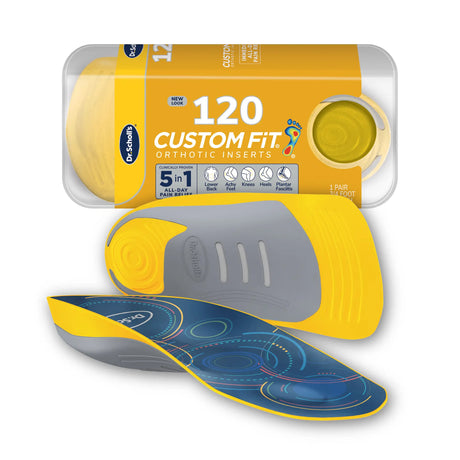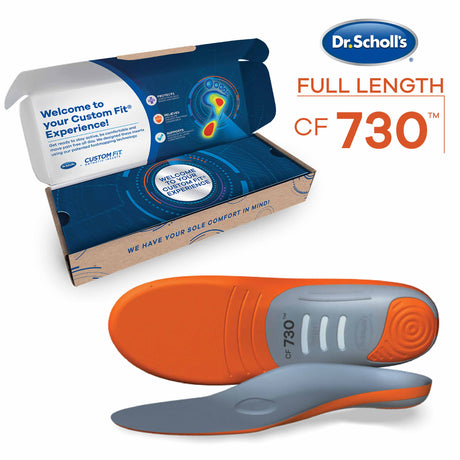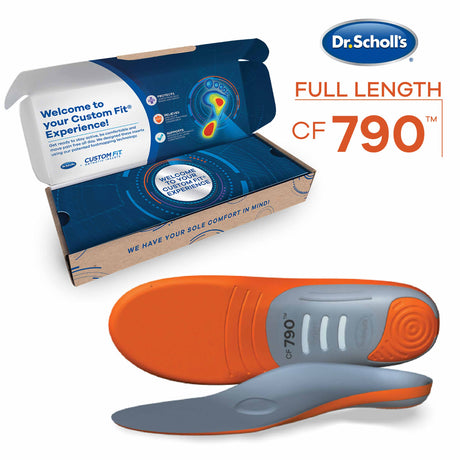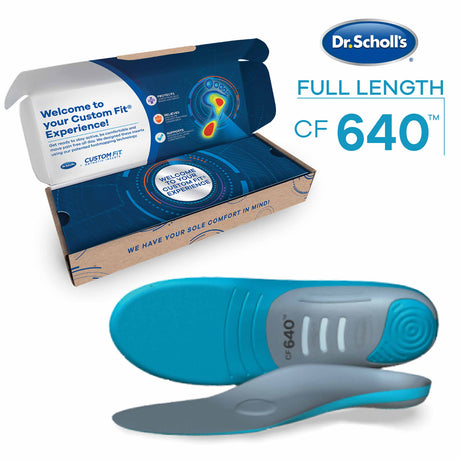Arthritis & Joint Pain FAQs
Economy shipping is FREE for orders over $25+!

There are many different treatment options for sacroiliac joint pain, depending on the cause and severity of the symptoms. Doctors typically recommend conservative therapies first, including:
• Over-the-counter pain relievers — Non-steroidal anti-inflammatory drugs (NSAIDs) such as ibuprofen and naproxen can help alleviate sacroiliac joint pain and inflammation.
• Physical therapy — Stretching and strengthening exercises can help improve range of motion and strengthen supporting muscles to reduce sacroiliac joint pain. A physical therapist can put together a routine based on individual needs.
If your pain doesn’t improve after trying over-the-counter medications and physical therapy, see your doctor. There are stronger treatments available, including prescription pain relievers, muscle relaxers and biologics in addition to other therapies such as injections and surgery.
Joint pain is a common symptom of COVID-19. However, not all people experience joint pain with a COVID-19 infection. If you have joint pain that persists after you have recovered from COVID-19 or if your pain is severe, see your doctor.
There are many different potential causes of joint pain. Some of the most common causes of joint pain include:
• Arthritis — Joint pain is a common symptom of certain types of arthritis, such as osteoarthritis and rheumatoid arthritis.
• Bursitis — Most commonly caused by an injury or overuse, bursitis is inflammation of the bursae, fluid-filled sacs that lessen friction between moving parts in the body. A common symptom of bursitis is pain in the joint near the inflamed bursae.
• Lyme disease — Joint swelling, pain and stiffness can occur with Lyme disease, a bacterial infection that’s typically caused by tick bites.
• Cancer – Certain types of cancer such as leukemia and bone cancer can cause joint pain.
• Rheumatic fever — Believed to be an immune response to a previous infection, rheumatic fever can cause swelling and pain in the joints.
• Rickets — Most often caused by a vitamin D deficiency, rickets can result in joint pain and swelling
• Bone conditions — Joint pain can be a symptom of certain bone conditions, such as osteonecrosis, osteomyelitis and broken bones.
• Tendonitis — Often caused by overuse and injury, tendonitis is inflammation of a tendon. The condition can cause pain in or near the neighboring joint.
• Sprains — A common injury, sprains occur when a ligament is torn or becomes stretched. Sprains can result in pain and inflammation in the affected joint.
However, there is a great deal of non-specific joint pain that can occur as a result of wear & tear, aging, increased weight, increased activity or occasional heavy lifting.
There are a number of at-home therapies and medical treatments that can help with joint pain. See your doctor for an evaluation and treatment recommendations.
Joint pain from arthritis can often be addressed with at-home remedies, including:
• Pain relievers and anti-inflammatory drugs — Many people with arthritis are able to get relief from over-the-counter NSAIDs (non-steroidal anti-inflammatory drugs) such as naproxen and ibuprofen. Topical gels and creams containing NSAIDs are another option. For pain that’s more severe, prescription-strength NSAIDs and other types of pain relievers are also available.
• Exercise — If your joint pain is due to arthritis, it can be helpful to exercise regularly. Light, low-impact activities such as walking and swimming can help ease joint stiffness and pain without putting additional stress on tender joints.
• Insoles and orthotics — When worn with high-quality shoes, orthotics and insoles can help stabilize the lower body and take pressure off achy joints. Dr. Scholl’s® Arthritis Support Insoles Pain absorb painful shock and keep the feet in proper position, reducing stress on arthritic knees and hips.
• Hot and cold therapy — Painful joints may benefit from hot and cold therapy. Heat from a heating pad or hot compress can help ease stiffness and pain while cold therapy from icing or a cold compress can help reduce inflammation.
See your doctor if your pain doesn’t improve using at-home remedies and self-care techniques. In some cases, joint pain is a symptom of a serious medical condition or injury that may require treatment from a doctor. Joint pain from advanced stages of arthritis also may require medical treatment such as injections, prescription drugs and surgery.
If you suffer from sacroiliac joint pain or SI joint pain, you may need to experiment in order to find a comfortable sleeping position. Some people find that sleeping on their back is the most comfortable position while others report less pain while sleeping on one side. If you’re experiencing pain only on one side, you can try sleeping on the opposite side.
It may be helpful to place a pillow underneath your knees if you sleep on your back. This can help take pressure off the SI joint. If you sleep on your side, you might try sleeping with a pillow between your knees.
Sacroiliac join pain is usually felt in the lower back and buttocks. In some cases, the pain can radiate to other areas, such as the groin, legs and feet. Sacroiliac join pain is often described as a sharp, stabbing pain. The pain may be accompanied by numbness or tingling. Some people also experience a feeling of weakness or instability. The pain is often worse after sitting or lying down for long periods as well as while climbing and running.
Some people report an increase in joint pain due to certain weather conditions, such as rain. While it may not be possible to stop joint pain completely when it rains, the following tips may be helpful:
• Exercise — Inactivity can cause muscles to tighten up, worsening joint pain. Physical activity can help keep the muscles loose and ease joint pain. If you can’t get outside because of the rain, consider purchasing a stationary bike or a treadmill for walking.
• Heat therapy — Applying a warm compress or heating pad directly to painful joints can help ease pain. Heat therapy can also be very comforting during cold, rainy weather.
• Stretching — Keeping muscles limber with regular stretching exercises can help reduce joint pain. Ask a physical therapist for guidance.
• Over-the-counter pain relievers and anti-inflammatory medications — Many people with joint pain get relief from over-the-counter NSAIDs (non-steroidal anti-inflammatory drugs). There are both oral and topical options.
There is no scientific evidence of an exact barometric pressure reading that causes joint pain. It’s not clear if barometric pressure can contribute to joint pain at all. However, many people report worsening symptoms during cold, rainy weather when the barometric pressure drops. On the other hand, some people report worsening symptoms when barometric pressure rises. More research is needed to understand the correlation, if any, between weather and joint pain.
There are a number of treatments available to help relieve thumb joint pain. Treatment will depend on the cause and severity of the pain. One of the most common causes of thumb joint pain is thumb arthritis. During the early stages of thumb arthritis, symptoms are typically not severe and most doctors recommend trying conservative therapies, such as:
• Thumb splint — Your doctor may recommend a thumb splint to help support the tender joint and prevent excess movements, which can trigger pain.
• Over-the-counter pain relievers — Oral pain relievers available over-the-counter can help relieve thumb joint pain. Non-steroidal anti-inflammatory drugs (NSAIDs) such as ibuprofen and naproxen can also reduce inflammation. Topical NSAIDs applied directly to the sore joint can also be helpful. Dr. Scholl’s® Arthritis Pain Reliever is a non-greasy gel medicated with the NSAID diclofenac sodium. The fast-absorbing gel penetrates deeply to target the source of joint pain.
See your doctor if you thumb joint pain is severe or if it doesn’t improve with at-home therapies. It’s also important to see your doctor if your thumb joint pain occurred suddenly as a result of an injury. You may have a condition that requires medical attention. There are a number of prescription and medical treatment options for thumb joint pain, including injections, prescription medications and surgery.








































